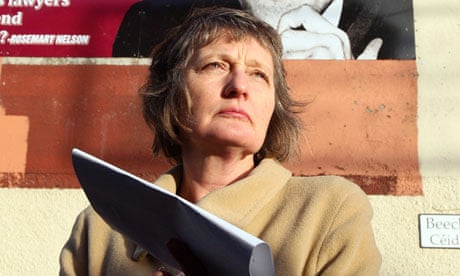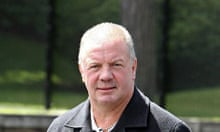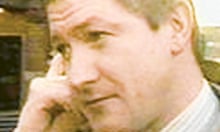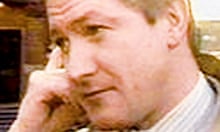It is a real-life conspiracy thriller involving terrorists working as secret police and army agents who murder a lawyer in front of his family – a crime that is then covered up by powerful interests in the security forces.
At lunchtime a report running to 500 pages, which its author claims is based on previously unseen highly classified documents, will be released into the killing nearly a quarter of a century ago of Belfast solicitor Pat Finucane.
The murder in February 1989 and the long campaign to expose the truth about it has pitted the victim's family against members of the military and police establishment for the last two decades, and will in all likelihood not end with the publication of the report.
Finucane was a high-profile defence lawyer whose clients included many prominent IRA suspects such as former hunger striker Pat McGeown who was charged in 1988 – but later acquitted – with the murder of two army corporals who were captured and killed while working undercover at an IRA man's funeral. He came from a prominent republican family and his brother Seamus was a senior figure in the Belfast IRA. Pat Finucane was one of three Catholic solicitors whom the UDA had threatened on the goading of RUC officers.
Finucane's widow, Geraldine, has criticised the terms of reference of the Lord Desmond de Silva inquiry, which was ordered by David Cameron. She vowed at the weekend, during the unveiling of a mural dedicated to her husband in west Belfast, that the Finucane family would fight on for a fully independent and international inquiry.
From previous inquiries and investigations it has emerged that 29 members of the Ulster Defence Association – the loyalist terror group that killed Pat Finucane – were, at the time of the murder, either agents for the Royal Ulster Constabulary's (RUC) Special Branch or army intelligence's covert Force Research Unit (FRU). Or indeed both.
In the case of one important UDA informer connected to the Finucane murder, named in previous reports as Jim Spence, it is understood that he was taken to Spain by his MI5 handlers more than a decade ago and briefed on what to say, or what not to say, to any investigation teams exploring the Finucane shooting. Spence is alleged to have been given information on Finucane from a member of RUC Special Branch.
Among the most high-profile of the agents working inside the UDA for FRU at the time of the Finucane murder was Brian Nelson. The ex-soldier had been recruited to infiltrate the UDA for FRU but, while a paid state agent, provided the terror group with intelligence to target suspected IRA men and members of the nationalist community. The latter targets included Pat Finucane.
One UDA veteran later described the information that Nelson provided them via military intelligence files as "very, very good". Another loyalist, commenting on the detail Nelson was starting to hand over to the UDA's intelligence unit, said: "He could tell you the colour of a target's eye." Nelson's role has raised the spectre that FRU was providing detailed information on the IRA members for the UDA to assassinate.
After Nelson was arrested and later convicted of possessing army intelligence files for the UDA, he later disappeared from Northern Ireland with help from his FRU handlers. Nelson, who died of a brain haemorrhage in 2003 while living in hiding, was regarded as one of the security forces' most important agents inside loyalist terrorism. He is understood to have foiled a plot using a limpet mine to murder Sinn Féin president Gerry Adams in 1987 – an incident which Lord de Silva refers to in his report.
Another of those involved in the Finucane murder plot, the UDA's so called quartermaster in west Belfast, Billy Stobie, was later shot dead in 2002 after admitting to the media that as a Special Branch informer he had passed information, which the RUC had ignored, about an imminent loyalist killing in the city. Both Stobie and one of the gunmen who fired shots into Finucane's body, Ken Barrett, were both RUC Special Branch informants. Barrett later disappeared from Northern Ireland following his admission on BBC's Panorama programme that he had shot Finucane.
A third link in the murder-squad chain is another loyalist gunman who was in the Finucane house on the night of the murder. He became a prominent member of Johnny 'Mad Dog' Adair's notorious C Company of the UDA during the 1990s and later betrayed the Shankill Road loyalist leader in a series of byzantine feuds that rocked the organisation during the peace process.
Ahead of the report one of the most important whistleblowers in the Finucane scandal, a former military intelligence officer, has predicted none of the agents or their handlers in the FRU will face sanction over the murder.
Ian Hurst, who as a FRU soldier at the time, had first-hand knowledge of the ten fellow military intelligence officers who ran agents inside the west and north Belfast UDA. Hurst pointed out that many of these FRU officers later received medals for their services during the covert war in Northern Ireland.
"Agents are always a 'protected species' whilE they are of some value," Hurst said. "While the state is determined to hide the truth in the interest of national security I do not believe any 'handlers' or their 'agents' who were involved in this and other murders will be prosecuted."
As well as the role of the FRU in running terrorists directly or indirectly who were involved in the shooting, RUC Special Branch may come under criticism for deliberately destroying evidence, losing fingerprints and handing back a pistol used to shoot the lawyer to the British army.






